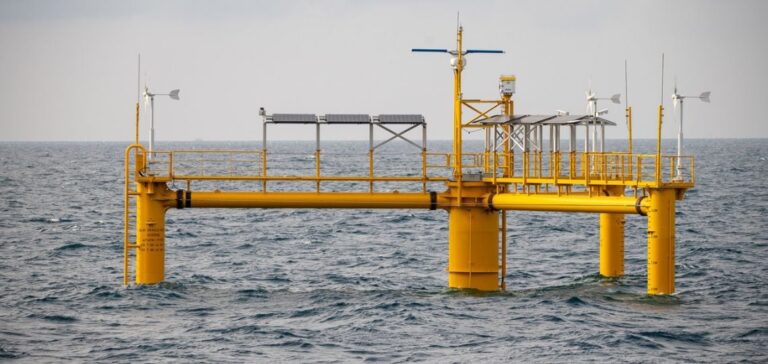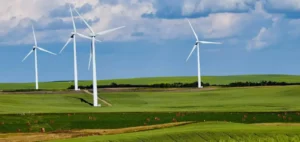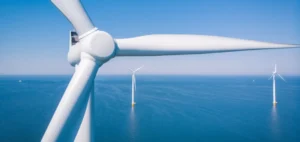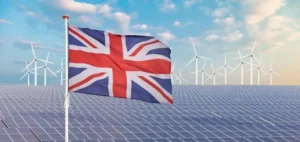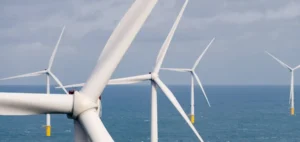The OCG-Wind pilot plant, initiated by TotalEnergies near the Culzean gas field in the North Sea, is entering its construction phase, with the cutting of the first steel scheduled for the next two months.
Equipped with a 3 MW Vestas turbine, this floating unit is designed to cover around 20% of the gas platform’s electricity needs.
The project is one of 13 selected in 2023 under the Scottish Crown Estate’s INTOG tender, which supports the integration of renewable energy into the oil and gas sector.
Modular technology and cost reduction
The OCG-Wind technology developed by Ocergy is based on a modular design that reduces the cost and construction time of floating foundations.
This lighter model is designed to meet the needs of turbines from 15 to 22 MW, a power range in high demand in the industry.
The aim is to make these foundations suitable for a wide range of markets and installations.
Development work has enabled us to reach an advanced level of technological maturity (Technology Readiness Level – TRL), guaranteeing the reliability and commercial appeal of this solution.
The challenge for Ocergy is to industrialize this process in order to reduce operating and construction costs, while offering greater flexibility in the choice of sites and partners.
Collaboration with players in the energy sector
Ocergy is working with several major players in the energy sector to promote this technology, including TotalEnergies, Octopus Energy, and Chevron Technology Ventures.
This collaboration is part of a strategic partnership aimed at diversifying energy sources and boosting the operational efficiency of existing facilities.
Securing seabed rights through the INTOG process enables TotalEnergies to develop hybrid solutions combining fossil and renewable energy.
These initiatives reflect a growing interest in optimizing offshore resources, taking advantage of technological innovations to ensure reliable, cost-effective energy production.
The results of this pilot project could guide future investment decisions in other regions.
Impact on North Sea operations
The development of the OCG-Wind project near the Culzean field is part of a wider strategy to optimize TotalEnergies’ offshore assets.
By relying on floating wind energy, the company is seeking to improve the energy self-sufficiency of its facilities while reducing dependence on traditional energy sources.
The economic impact of this transition hinges on the ability to maintain competitive costs in the face of fluctuating energy prices.
The success of this construction phase will be closely watched by other operators in the sector, as it could set new standards for the integration of floating wind technologies into existing offshore infrastructures.
What’s more, the experience acquired on this project could be applied to future projects in other strategic maritime zones.


